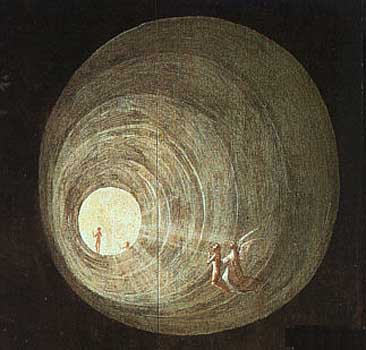Finally someone is putting the NDE (near death experience) phenomena to the test. Scientists from the U.K. and the U.S. will be conducting a year long test in hospitals to see if NDE are real. How exactly will they test? you ask.
Well the plan is to suspend a few pictures face up from the ceilings in the trauma/emergency care areas. If NDE are real, then the patient will be able to recall the room, doctors and nurses as well as the painting that is hanging from the ceiling. Many people who report an NDE claim that they first have an out of body experience in which they can feel and see themselves floating away from their own body.
I’m actually really interested to see what the results show.
Excellent!
Full source: Wall Street Journal
12 commentsAt 18 hospitals in the U.S. and U.K., researchers have suspended pictures, face up, from the ceilings in emergency-care areas. The reason: to test whether patients brought back to life after cardiac arrest can recall seeing the images during an out-of-body experience.
People who have these near-death experiences often describe leaving their bodies and watching themselves being resuscitated from above, but verifying such accounts is difficult. The images would be visible only to people who had done that.
“We’ve added these images as objective markers,” says Sam Parnia, a critical-care physician and lead investigator of the study, which hopes to include 1,500 resuscitated patients. Dr. Parnia declined to say whether any have accurately described the images so far, but says he hopes to report preliminary results next year.
The study, coordinated by Southampton University’s School of Medicine in England, is one of the latest and largest scientific efforts to understand the mystery of near-death experiences.
At least 15 million American adults say they have had a near-death experience, according to a 1997 survey—and the number is thought to be rising with increasingly sophisticated resuscitation techniques.
In addition to floating above their bodies, people often describe moving down a dark tunnel toward a bright light, feeling intense peace and joy, reviewing life events and seeing long-deceased relatives—only to be told that it’s not time yet and land abruptly back in an ailing body.
The once-taboo topic is getting a lot of talk these days. In the new movie “Hereafter,” directed by Clint Eastwood, a French journalist is haunted by what she experienced while nearly drowning in a tsunami. A spate of new books details other cases and variations on the theme.
Yet the fundamental debate rages on: Are these glimpses of an afterlife, are they hallucinations or are they the random firings of an oxygen-starved brain?
“There are always skeptics, but there are millions of ‘experiencers’ who know what happened to them, and they don’t care what anybody else says,” says Diane Corcoran, president of the International Association for Near-Death Studies, a nonprofit group in Durham, N.C. The organization publishes the Journal of Near-Death Studies and maintains support groups in 47 states.
Dr. Corcoran, a retired Army colonel who heard wounded soldiers talk of such experiences as a nurse in Vietnam, says many military veterans have had near-death experiences but are particularly hesitant to talk them for fear of being branded psychologically disturbed.
Some investigators say the most remarkable thing about near-death reports is that the core elements are the same, among people of all cultures, races, religions and age groups, including children as young as 3 years old.
In his new book, “Evidence of the Afterlife,” Jeffrey Long, a radiation oncologist in Louisiana, analyzes 613 cases reported on the website of his Near Death Research Foundation and concludes there is only one plausible explanation: “that people have survived death and traveled to another dimension.”
Skeptics say there is no way to verify such anecdotal reports—and that many of the experiences can be explained by neurobiological changes in the brain as people die.
In the 1980s, British neuroscientist Susan Blackmore theorized that oxygen deprivation was to blame and noted that fighter pilots also encountered tunnel vision and hallucinations at high altitudes and speeds.
This year, a study of 52 cardiac-arrest patients in Slovenia, published in the Journal of Critical Care, found that the 21% who had near-death experiences also had high blood levels of carbon dioxide, which has been associated with visions, bright lights and out-of-body experiences.
A study of seven dying patients at George Washington University Medical Center, published in the Journal of Palliative Medicine, noted that their brainwaves showed a spurt of electrical activity just before they were pronounced dead. Lead investigator Lakhmir Chawla, an intensive-care physician, notes that the activity started in one part of the brain and spread in a cascade and theorized that it could give patients vivid mental sensations.
Read more over at the Wall Street Journal





